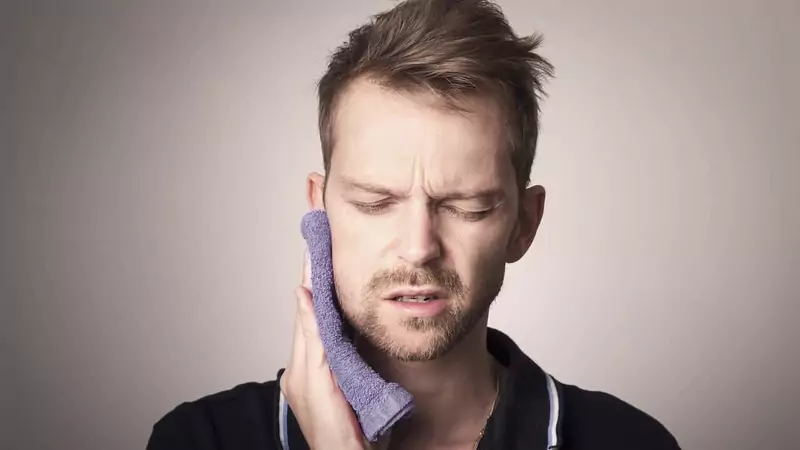Wisdom Teeth
Wisdom teeth are the third molars that erupt last and are located last in the jaw arch. Most people have four wisdom teeth, two in the upper jaw and two in the lower jaw. However, 3rd molars may be less than four in some people, or they may not form at all.
Because 3rd molars sometimes do not fully erupt, they may not reach the oral cavity. In this case, they can remain fully or partially impacted because they cannot find a place to come out. At this time, they can cause inflammatory conditions in that area. Such situations necessitate their removal.
When does Wisdom Teeth erupt?
From our teeth, milk teeth erupt first. After the milk teeth fall out, the front teeth and then the canine teeth erupt. Following these teeth, molars erupt, then, the wisdom teeth erupt.
While the teeth continue to erupt, the jaw continues to develop. In this development, these teeth come out when space forms for them. Wisdom teeth usually appear between the ages of 17-25. But they can come out earlier, as well as later.
Symptoms of a Wisdom Tooth
If your wisdom teeth have erupted, you will be able to feel it with your tongue. Sometimes there may be swelling in the gum of the adjacent tooth. If you have pain in the back of your jaw and difficulty opening the jaw, it may be related to the eruption of your 3rd molars. At this time, you should see your dentist. With imaging tests, the dentist will determine how the tooth came out, its size, and whether your jaw width is suitable for this tooth.
What to do when Wisdom Teeth problems start?
In these cases, we usually see the acute and active infection. At this time, first of all, the dentist starts antibiotic treatment and by this provides hygiene in the patient’s mouth. Then, the dentist performs the extraction of the tooth. If the tooth extraction is before starting antibiotic treatment, the infection may spread to neighboring teeth. Therefore, the dentist treats the infection first.
In what condition should the 3rd molar be pulled?
Since wisdom teeth can be the place where food residues are collected, most cavities may occur in these teeth if the person doesn’t clean them adequately. If the person’s jaw is not wide enough and the person does not have adequate oral hygiene, inflammation will inevitably occur in these teeth. Subsequently, problems may occur in the tissues around the tooth. These conditions also cause a bad odor in the mouth. In these cases, it is necessary to extract these teeth. In addition, various types of mouthwash (eg, ADA approved; TheraBreath Fresh Breath, CloSYS Fresh Breath Sensitive Gentle Mint, CloSYS Ultra Sensitive Unflavored, or as a different choice: Tom’s of Maine Natural Wicked Fresh) will be beneficial for maintaining oral hygiene.
When should I have my 3rd molar pulled?
There is no specific time for the extraction of wisdom teeth. But in terms of a faster recovery process, the age range of 20-30 is a period you can prefer when their roots are not yet fully developed. Because after the age of 40, the extraction of wisdom teeth takes longer to heal.
Are Wisdom Teeth extracted like normal teeth?
The dentist doesn’t extract 3rd molars like other teeth. The positions of these teeth in the jawbone, their height, and whether they are covered with bone or gum make them different from normal teeth. Therefore, the extractions of these teeth are different.
The dentist mostly performs the extraction of wisdom teeth by surgery under local anesthesia. Mild sedating medications may also be required in addition to patients with severe nausea reflexes. In some cases, the dentist extracts third molars under general anesthesia. Generally, the dentist completes these procedures in a single session.
After Wisdom Teeth Removal
After the dentist extracts the third molars, the patient should hold the tampon placed in the mouth for half an hour. The patient should try to spit as little as possible because spitting can cause bleeding. The patient should not tamper with the wound in the area. Otherwise, this may increase pain, and cause infection or bleeding.
Swelling may occur in the area after surgery. Therefore, after tooth extraction, the dentist applies cold to the area to prevent or reduce swelling that may occur on the face (cheek).
Feeding and oral hygiene after extraction
You should not eat food for 2 hours after the dentist does the surgery and the numbness disappears. You will need to feed on softer foods until the wound heals. During the first day, you should not chew food from the tooth removal area. While consuming foods, chewing with your teeth on the other side will speed up the healing process.
During the first 24 hours, the patient should not smoke. Smoking can increase bleeding, which can delay the healing process. After brushing your teeth, use an antiseptic mouthwash, eg, ADA approved; Listerine Ultraclean Arctic Mint and Listerine Ultraclean Cool Mint that will help you relax. Especially since these are antiseptic mouthwash, although they contain alcohol, they also contain zinc to prevent bad breath.
References
American Dental Association: “Wisdom Teeth”
Cleveland Clinic: “Do Your Wisdom Teeth Really Have to Come Out?”
Mayo Clinic: Diseases and Conditions, “Impacted wisdom teeth”
Oral Health Foundation: “Wisdom teeth”

